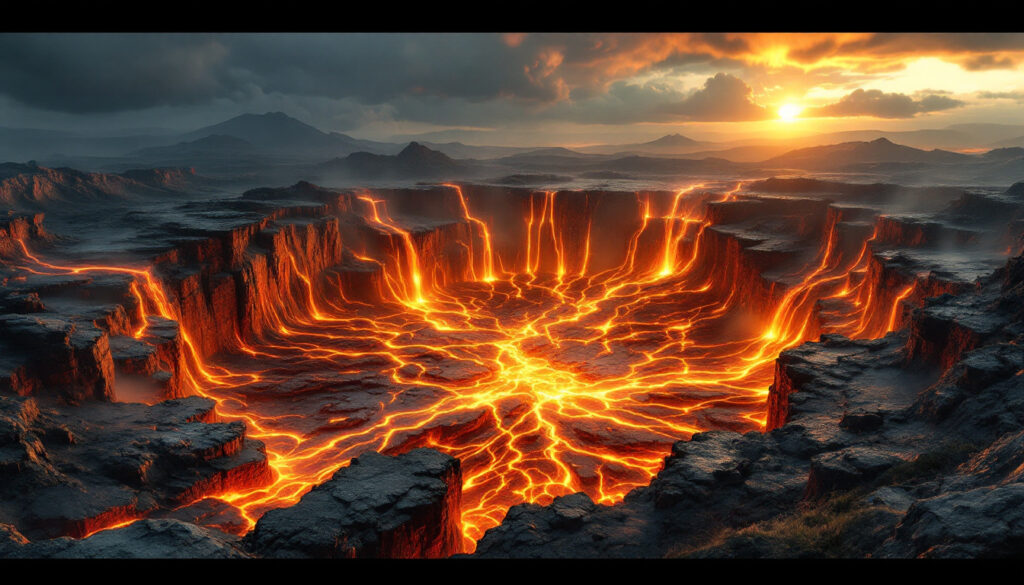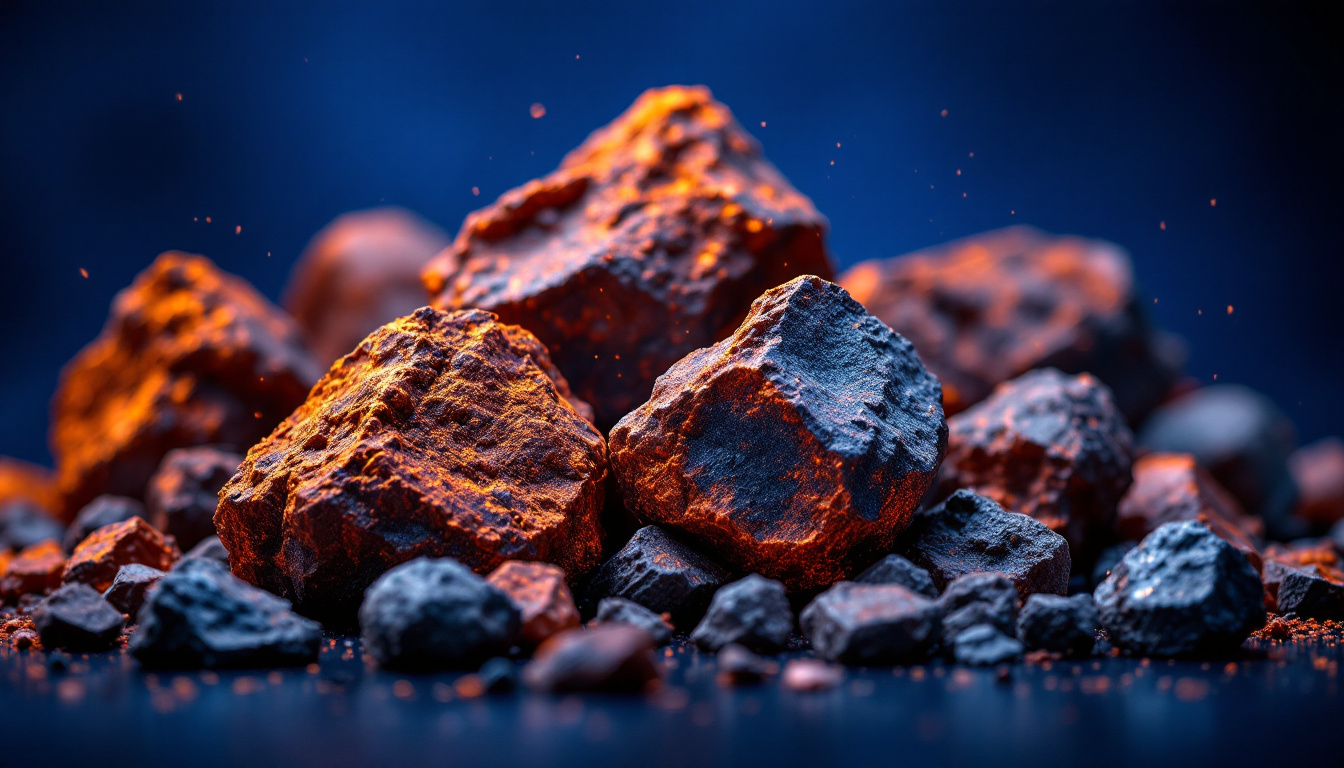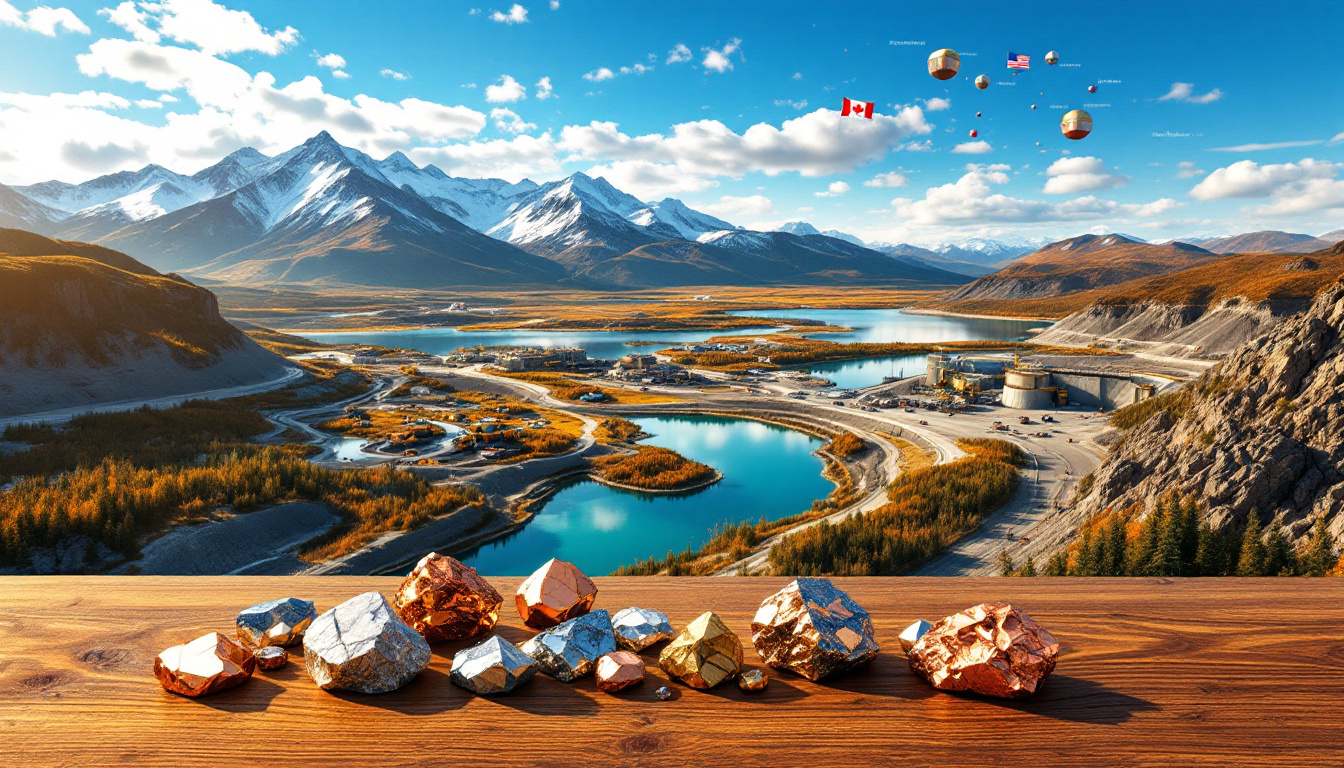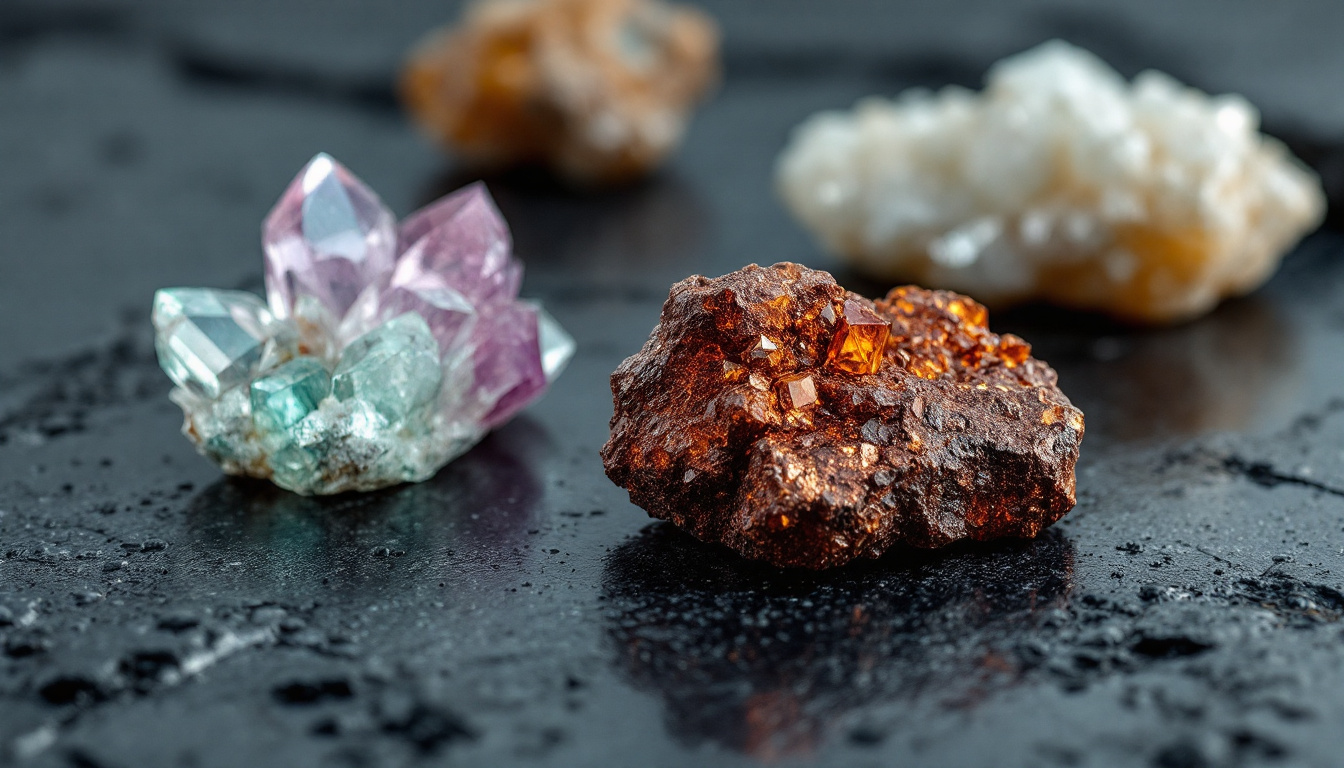Understanding Magmatic Nickel Deposits
Magmatic nickel deposits represent some of the most valuable mineral resources on Earth. These geological wonders form through complex processes involving molten rock and provide essential materials for modern technology. While comprising only about 30% of global nickel production (supporting approximately 3 million tonnes of annual production), these deposits command exceptional interest in the mining industry due to their unique characteristics and multi-metal potential.
What Are Magmatic Nickel Deposits?
Magmatic nickel deposits form directly from molten rock and account for approximately 30% of global nickel production. Despite representing a minority of nickel production, these deposits are highly sought-after due to their large tonnage potential, high grades, and valuable byproducts.
The appeal of magmatic nickel deposits stems from several key factors:
- Large tonnage potential (some exceeding 1,000 Mt)
- High grades (typically 0.5-3% Ni)
- Ease of processing compared to laterite deposits
- Valuable byproducts including copper, cobalt, gold, and platinum group elements (PGEs)
As noted by Ian Burron of Geology for Investors, "Nickel's compatibility with silicate minerals necessitates sulfur-rich sedimentary assimilation to concentrate economic-grade sulfides." This fundamental principle explains why these deposits, though rarer than laterite nickel deposits, often deliver superior economic returns.
Perhaps the most striking example is Norilsk's Oktyabrysk ore body, valued at approximately $500 billion—making it possibly the highest-value single ore body globally.
Formation Process
The formation of magmatic nickel deposits begins with nickel-rich magmas and requires specific conditions to create economically viable concentrations:
- Mafic-ultramafic magmas naturally contain higher nickel contents
- When nickel encounters sulfur, they combine to form droplets of sulfide melt
- These sulfide droplets are immiscible with silica-rich magma and separate like oil from water
- Being denser than surrounding magma (sulfide density: ~4.5–5 g/cm³ vs. silicate magma's ~2.7 g/cm³), these droplets sink to the bottom of magma chambers
- As they sink, these droplets absorb precious metals like gold and PGEs, enriching the ore
The metal partitioning coefficients for platinum group elements are particularly impressive, with palladium showing 10³–10⁴ times higher concentration in sulfide versus silicate melts. This explains why PGE enrichment at deposits like Norilsk can reach 10 g/t, well above the global average of 2–4 g/t.
Key Requirements for Deposit Formation
Four critical factors must align to create economically viable magmatic nickel deposits:
- Nickel-rich mafic-ultramafic magma
- External sulfur source (typically sulfur-rich sedimentary rocks)
- Dynamic magmatic system with strong currents and frequent magma pulses
- Effective mixing mechanisms for sulfide droplets and silicate melt
The magma volume-to-sulfide ratio plays a crucial role in determining deposit quality. Ratios exceeding 500:1 are associated with high-tenor ores, as seen at deposits like Raglan, where nickel concentration in sulfides reaches 15%.
According to Arndt et al. (2005), "Komatiite thermomechanical erosion delivers external sulfur at 1,600°C," highlighting the importance of these ultra-hot magmas in effectively assimilating crustal sulfur to form deposits.
Types of Magmatic Nickel Deposits
Magmatic nickel deposits fall into three primary categories, each with distinct characteristics and formation conditions. Globally, approximately 60% are intrusion-hosted, 30% are komatiite-related, and 10% are impact-related.
Intrusion-Hosted Deposits
Intrusion-hosted deposits represent the most common and often largest magmatic nickel occurrences:
- Found within mafic-ultramafic intrusions
- Formed throughout geologic history
- Often associated with rift systems or mantle plumes
- Typically contain approximately equal amounts of Ni and Cu
- Can be very large (>1,000 Mt)
- Examples: Norilsk (Russia), Jinchuan (China)
The Jinchuan deposit in China exemplifies this category, containing approximately 500 Mt of ore grading 1.06% Ni and 0.67% Cu. These intrusion-hosted deposits typically form in dynamic magmatic environments where multiple pulses of magma interact with sulfur-rich country rocks.
Komatiite Deposits
Komatiite deposits represent a fascinating but restricted class of nickel deposits:
- Occur in ultramafic volcanic flows (komatiites)
- Restricted to Archean and early Proterozoic eons (>2 billion years old)
- Often contain >10× more Ni than Cu
- Generally smaller than intrusion-hosted deposits
- Examples: Kambalda (Australia), Thompson (Canada)
Komatiite flow thickness typically ranges from 10–100 meters, which is critical for the thermal erosion of sulfur-rich substrates. The Thompson deposit in Canada showcases deformed komatiite ores with remobilized pyrrhotite, illustrating how these ancient deposits often undergo significant metamorphism over their multi-billion-year history.
Astrobleme (Impact-Related) Deposits
Perhaps the most unique magmatic nickel deposits are those resulting from extraterrestrial impacts:
- Found only in Sudbury, Canada
- Formed from a massive asteroid impact 1.86 billion years ago
- Heat of impact melted mafic-ultramafic and sedimentary rocks
- Produced one of the richest mining districts in the world (>$250 billion in metals)
- Contains subequal amounts of Ni and Cu
Lightfoot (2023) notes that "Sudbury's impact melt sheet achieved >90% sulfide saturation in <10 kyr," explaining the rapid and efficient concentration of metals following the catastrophic impact. This unique geological event created deposits that have produced approximately 1.7 billion tonnes of ore throughout their mining history.
Mineralogy and Metal Content
The economic value of magmatic nickel deposits stems from their mineralogical composition and associated metals.
Primary Economic Minerals
Three sulfide minerals dominate the mineralogy of magmatic nickel deposits:
- Pentlandite ((Fe,Ni)₉S₈) – principal nickel mineral containing 18–40 wt% Ni
- Chalcopyrite (FeCuS₂) – principal copper mineral
- Pyrrhotite (Fe₇S₈) – major gangue mineral
The relative proportions of these minerals, especially the pentlandite-to-pyrrhotite ratio, directly influence the tenor (nickel content in sulfides) and thus economic viability.
Metal Grades and Distribution
Magmatic nickel deposits contain a suite of valuable metals in varying concentrations:
- Nickel: 0.5-3% (primary economic metal)
- Copper: 0.2-2% (significant byproduct)
- Cobalt: <0.1% (valuable byproduct)
- PGEs: 0-10 g/t (highly variable, can exceed base metal value)
- Gold: Variable, typically low grade
The contrast in PGE content between deposits is stark—Norilsk averages 4.41 g/t PGEs while Jinchuan contains only 0.5 g/t. According to Mungall (2024), "Sulfide liquid fractionation explains Cu-PGE enrichment in upper ore zones," highlighting how metal distribution patterns can provide critical insights into deposit formation.
Ore Textures and Zoning
Magmatic nickel deposits typically display distinct textural and compositional zoning:
- Massive sulfides: Dense accumulations in depressions or fractures
- Net/matrix sulfides: Sulfides surrounding silicate minerals
- Disseminated sulfides: More dispersed mineralization above massive zones
- Vertical zoning: Ni-rich, pyrrhotite-dominated assemblages in lower areas grading to Cu-PGE rich assemblages in upper areas
Microscopic textures, such as pentlandite flames in pyrrhotite, indicate cooling rates less than 1°C/hour and provide valuable information about deposit formation conditions.
How Are Magmatic Nickel Deposits Explored?
The exploration for magmatic nickel deposits involves unique challenges and specialized techniques.
Exploration Challenges
Finding economic magmatic nickel deposits presents several significant hurdles:
- Deposits tend to be small (10-100s of meters) relative to host intrusions
- Lack larger encompassing alteration footprints
- Often described as "needle in a haystack" exploration targets
- Geophysical signatures can be masked by dense, magnetic host rocks
The relatively small target size—mineralized zones 10–100m wide within 1–10km intrusions—makes detection difficult without high-resolution geophysical methods.
Effective Exploration Methods
Despite these challenges, several techniques have proven effective:
- Identification of prospective mafic-ultramafic bodies
- High-resolution gravity surveys to detect dense sulfide bodies
- Electromagnetic (EM) surveys to identify conductive sulfide zones
- Detailed mapping of magma conduits and basal contacts
- Drill testing of geophysical anomalies
Modern Falcon® gravity gradiometry can detect density contrasts as small as 0.1 g/cm³ at depths of 200 meters, significantly improving targeting precision. The discovery of Nova-Bollinger in Australia through combined VTEM (electromagnetic) and ground gravity surveys demonstrates the effectiveness of integrated geophysical approaches.
Lesher (2018) cautions that "Misinterpretation of host rock magnetism remains a key exploration pitfall," highlighting the importance of experienced technical teams in distinguishing between magnetic signals from host rocks versus mineralization. Understanding the technical aspects of mining drilling results is crucial for properly evaluating exploration success in these complex geological environments.
Mining and Processing Considerations
The mining of magmatic nickel deposits presents both advantages and challenges compared to other nickel sources.
Mining Advantages
Several factors make magmatic nickel deposits attractive for development:
- Potentially high grades and simple mineral composition
- Straightforward mining in undeformed deposits
- Multiple valuable metals providing diverse income streams
The multi-metal nature of these deposits serves as a natural hedge against price volatility. As noted by a Lundin Mining CEO, "PGE co-credits insulate cash flow against Ni price volatility," explaining why these deposits remain attractive even during nickel price downturns.
Mining Challenges
Despite their advantages, magmatic nickel deposits present several operational challenges:
- Deformation can complicate extraction (especially in older komatiite deposits)
- Sulfide bodies are softer than surrounding rocks, making them vulnerable to deformation
- Remote locations of many deposits (e.g., Norilsk in northern Siberia)
Capital expenditure benchmarks for greenfield magmatic nickel projects typically range from $15,000–$25,000 per tonne of annual nickel production, representing significant upfront investment requirements.
Environmental Considerations
The sulfide-rich nature of these deposits creates particular environmental concerns:
- Sulfide-rich nature can lead to acid mine drainage issues
- Processing emissions can cause significant pollution (as seen at Norilsk)
- Heavy metal contamination of surrounding areas
Approximately 40% of known magmatic nickel deposits are located in jurisdictions with high corruption indices, adding ESG risks to development considerations. However, many mining companies are now working toward decarbonisation in mining to address these environmental challenges.
Case Study: Norilsk – The World's Largest Magmatic Nickel District
No discussion of magmatic nickel deposits would be complete without examining the extraordinary Norilsk district in Russia.
Size and Significance
Norilsk represents the epitome of magmatic nickel deposits:
- Contains 2,137 Mt @ 0.72% Ni, 1.39% Cu, 4.41 g/t PGEs, and 0.22 g/t gold
- Oktyabrysk ore body alone valued at approximately $500 billion
- World's largest producer of palladium and third-largest producer of platinum
- Norilsk Nickel exerts strong influence on global Ni and PGE markets
Historical production exceeds 2.1 billion tonnes of ore, yielding approximately 15 million tonnes of nickel throughout its operational history.
Geological Setting
The geological context of Norilsk helps explain its exceptional size and grade:
- Hosted within the Siberian Traps, the world's largest continental Large Igneous Province
- Deposits comprise elongate bodies of massive and disseminated sulfide
- Bodies up to several kilometers long and 10s-100s meters thick
- Associated with deep-seated faults that acted as magma conduits
- Uniquely PGE-rich, with grades exceeding 10 g/t in some areas
Yakubchuk (2024) suggests that "Norilsk's PGE dominance stems from prolonged sulfide-melt interaction," highlighting the importance of extended magmatic processes in concentrating these rare metals.
Environmental Impact
Norilsk's mining legacy includes severe environmental consequences:
- One of the world's most polluted cities due to sulfur and heavy metal emissions
- Soils so contaminated they may be economically mined as man-made ores
- In 2016, a local river turned red due to wastewater leaks
Environmental metrics indicate pollution levels of approximately 2 million tonnes of SO₂ annually, creating air quality conditions six times worse than World Health Organization thresholds.
What Makes Magmatic Nickel Deposits Valuable for Investors?
Investors evaluating magmatic nickel projects must weigh distinctive advantages against specific risks.
Investment Advantages
Several factors make magmatic nickel deposits attractive investment opportunities:
- High-grade, easily processed mineralization
- Multiple valuable metals providing hedge against price fluctuations
- Long mine lives due to large tonnages
- Potential for high-value PGE credits
Net present value sensitivity analysis shows that a 10% increase in PGE prices can boost project internal rate of return by 3–5%, demonstrating the significant impact of byproduct credits. Recent ferro-nickel pricing transformation has also affected how these deposits are valued.
Investment Risks
Balancing these advantages are several important risk considerations:
- Rarity and difficulty of discovery
- High capital costs for development
- Often located in remote or challenging jurisdictions
- Environmental and social challenges in some locations
Recent developments show how these risks can be mitigated through strategic partnerships. For example, the Kabanga project in Tanzania secured $1 billion in financing through a Tesla offtake agreement, demonstrating how vertical integration with end-users can de-risk development. Furthermore, understanding global commodity market trends is essential for evaluating the long-term potential of magmatic nickel deposits.
FAQs About Magmatic Nickel Deposits
How do magmatic nickel deposits differ from laterite nickel deposits?
Magmatic nickel deposits form from molten rock and contain nickel in sulfide minerals, while laterite deposits form through tropical weathering of ultramafic rocks and contain nickel in oxide and silicate minerals. Magmatic deposits typically have higher grades, are easier to process, and contain valuable byproducts, but are rarer and smaller than laterites.
Why are PGEs often associated with magmatic nickel deposits?
PGEs are chalcophile (sulfur-loving) elements that preferentially partition into sulfide melts. When sulfide droplets form and sink through magma, they efficiently scavenge PGEs along with nickel and copper, concentrating these rare metals in the resulting deposits. The R-factor (mass ratio of silicate to sulfide melt) exceeding 1,000 correlates strongly with PGE enrichment.
Which companies are major producers of magmatic nickel?
Major producers include Norilsk Nickel (Russia), Vale (Canada/Brazil), Glencore (various locations), BHP (Australia), and Western Areas (Australia). These companies operate some of the world's largest magmatic nickel mines and have significant influence on global nickel markets. Current mining and finance industry predictions suggest continued demand growth for nickel.
How does tenor affect the economics of magmatic nickel deposits?
Tenor refers to the concentration of nickel in sulfide minerals and sets the upper limit on overall grade. Higher tenor deposits can be economic at lower overall sulfide percentages, while lower tenor deposits require higher sulfide content to achieve viable grades. Tenor tends to be higher when molten sulfide droplets interact with large volumes of silicate melt.
Curious About Miner Investing Strategies?
Discover opportunities that could shape your investment portfolio with Discovery Alert's proprietary Discovery IQ model, providing real-time alerts on significant ASX mineral discoveries. Gain insights into historic returns and potentially transformative discoveries by visiting Discovery Alert’s dedicated discoveries page.




